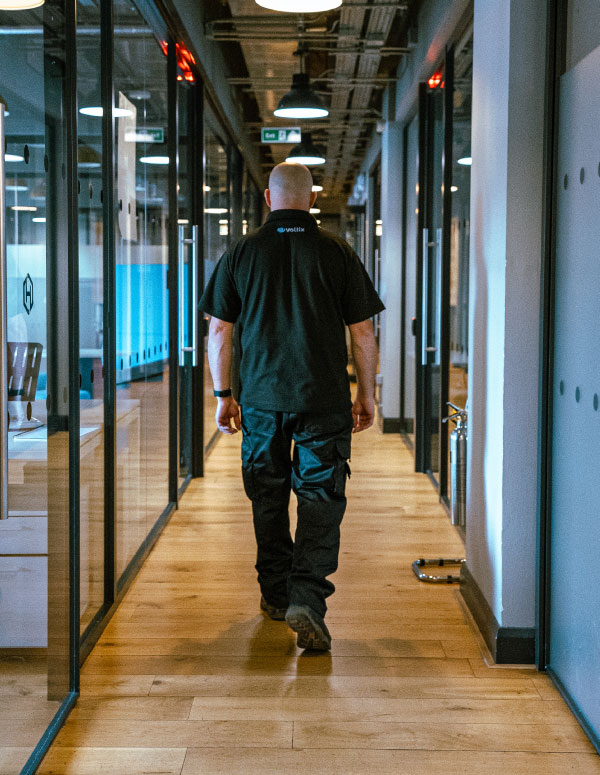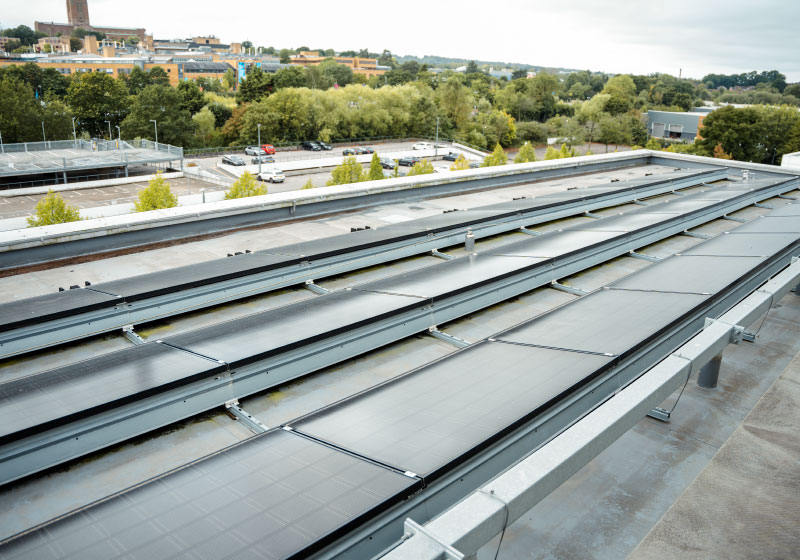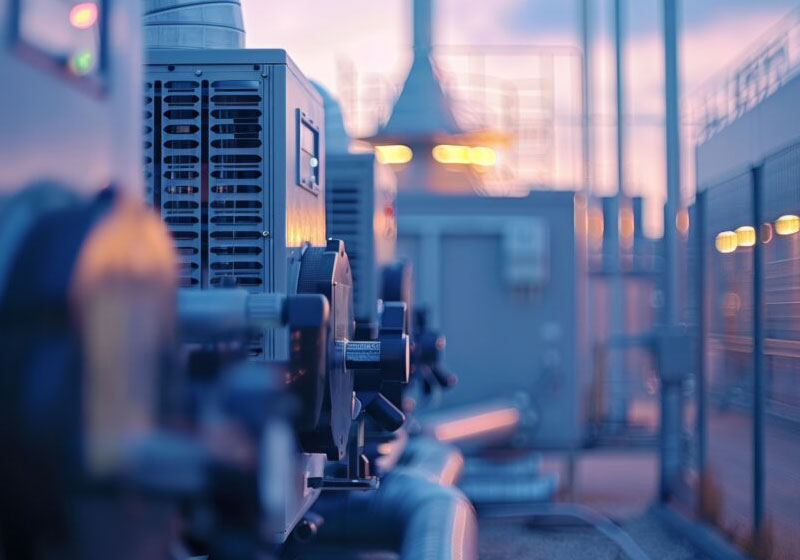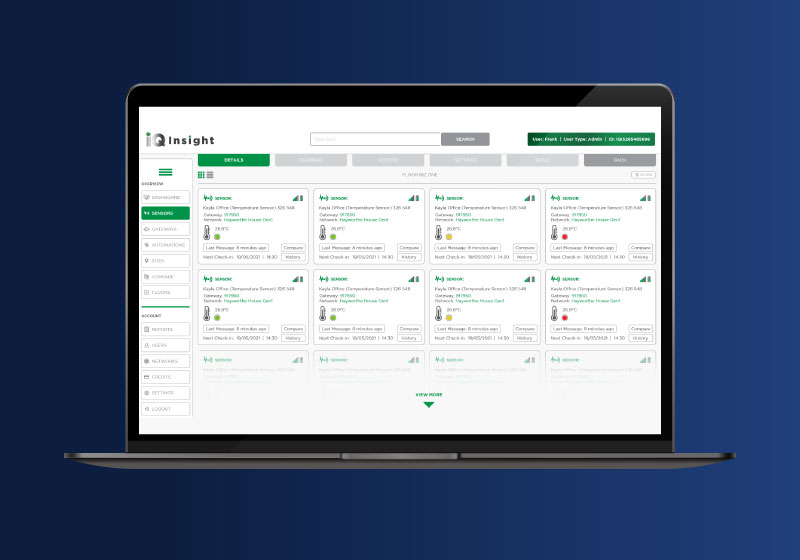Integrated Energy Solutions
The rising cost of energy, increasing environmental compliance and taxes and the business case for ESG affect all businesses. Sustainable energy solutions directly address these challenges. Renewable energy integration, including commercial solar and combined heat and power, reduces dependence on the grid and supports sustainable energy practices for commercial buildings and real estate portfolios.
Our specialist engineers work with businesses to design building energy systems that are tailored to your specific usage and needs. This ensures commercial solar and CHP systems are the correct size for continuous operations while reducing consumption and cost.

Renewable Energy Integration Services
Commercial Solar
Commercial solar is a great first step for businesses seeking to transition to renewable energy solutions. Our end-to-end commercial solar solutions ensure solar PV design that is a match for your operational requirements, with ongoing monitoring to effectively gauge efficiency improvements, cost savings and return on investment. Speak to us about commercial solar panels, solar installations and energy monitoring services and work with us for support at every step of the process.

Combined Heat and Power
Combined Heat and Power (CHP) generates electricity on-site while capturing heat that would normally be wasted, making it up to 70 – 80% efficient. This dual output reduces energy bills, cuts carbon emissions by 15 – 30% and provides reliable baseload power for continuous operations. CHP is well-suited for sectors such as healthcare, hospitality, commercial real estate and manufacturing, where both power and heating demands are high.
CHP systems are flexible, with units running on natural gas today and the option to transition to biogas or hydrogen blends in the future to support net zero goals. They integrate seamlessly with solar PV and energy storage, ensuring a balanced energy strategy that reduces grid reliance and improves resilience against supply disruptions. With a typical payback period of 3 – 6 years, CHP is a proven solution that combines cost savings, energy efficiency and sustainability in one system.

Smart Energy Monitoring
At Voltix Services, we are passionate about helping businesses to optimise energy efficiency. This means taking a holistic approach to energy monitoring and management. Using smart meters and smart AMI, our energy monitoring platform uses consumption data for precision processes. This data guides the design of solar and CHP systems, sets benchmarks for reducing consumption and building strategy and monitors offsets and return on investment over time.

LED Upgrades
LED lighting upgrades can help to cut consumption by up to 80%. Adoption of LED lights across your operations can lead to substantial reductions in electricity demand and costs. Adapting lighting to occupancy levels and the low replacement and maintenance requirements of LED systems further contribute to efficiency and cost savings.

Commercial Solar
Commercial solar is a great first step for businesses seeking to transition to renewable energy solutions. Our end-to-end commercial solar solutions ensure solar PV design that is a match for your operational requirements, with ongoing monitoring to effectively gauge efficiency improvements, cost savings and return on investment. Speak to us about commercial solar panels, solar installations and energy monitoring services and work with us for support at every step of the process.

Combined Heat and Power
Combined Heat and Power (CHP) generates electricity on-site while capturing heat that would normally be wasted, making it up to 70 – 80% efficient. This dual output reduces energy bills, cuts carbon emissions by 15 – 30% and provides reliable baseload power for continuous operations. CHP is well-suited for sectors such as healthcare, hospitality, commercial real estate and manufacturing, where both power and heating demands are high.
CHP systems are flexible, with units running on natural gas today and the option to transition to biogas or hydrogen blends in the future to support net zero goals. They integrate seamlessly with solar PV and energy storage, ensuring a balanced energy strategy that reduces grid reliance and improves resilience against supply disruptions. With a typical payback period of 3 – 6 years, CHP is a proven solution that combines cost savings, energy efficiency and sustainability in one system.

Smart Energy Monitoring
At Voltix Services, we are passionate about helping businesses to optimise energy efficiency. This means taking a holistic approach to energy monitoring and management. Using smart meters and smart AMI, our energy monitoring platform uses consumption data for precision processes. This data guides the design of solar and CHP systems, sets benchmarks for reducing consumption and building strategy and monitors offsets and return on investment over time.

LED Upgrades
LED lighting upgrades can help to cut consumption by up to 80%. Adoption of LED lights across your operations can lead to substantial reductions in electricity demand and costs. Adapting lighting to occupancy levels and the low replacement and maintenance requirements of LED systems further contribute to efficiency and cost savings.

Prepare for the Future With Renewable Energy Integration
From Feasibility to Long Term Performance
We support every step of your solar PV and CHP project from assessment and design to funding, installation, monitoring and maintenance, ensuring efficiency, compliance and return on investment.
Our Process
The first step is to assess the feasibility of commercial solar and CHP for your business and premises. We look at viability, funding options and how much you can expect to generate and save.
Our renewable energy solutions are specifically designed for your unique building layout and consumption requirements. Our solar PV and CHP systems designs can integrate with existing systems and are customised around your consumption data.
The upfront cost of installation doesn’t need to be daunting. Our team provides full costs and calculations, including projected return on investment. We can also advise on available funding, tax incentives and grants.
Installation is adaptable to minimise disruption. We project manage deployments to ensure they are straightforward and compliant, conducting full system tests to verify functionality.
Once systems are live and functional, they will provide energy and heat to your premises. We provide training on energy management dashboards and how to monitor generation and consumption data to implement smart energy management strategies.
Our team is on-hand to provide maintenance and repairs throughout the lifetime of your solar and combined heat and power unit. Need to scale? We are here to help you plan ahead and implement expanded sustainable energy solutions as your energy requirements change.
Benefits of Making the Move to Sustainable Energy Solutions
Reduced Energy Spend
Cut on-grid energy use to save on your bills immediately and deliver long-term cost reductions.
Optimise consumption to reduce reliance on traditional energy sources and systems.
Independent Energy Supply
Secure an uninterrupted energy source for resilience during outages or supply shortages.
Lower emissions and reduce your carbon footprint to benefit both the planet and your reputation.
Low Maintenance
Commercial solar and CHP systems require minimal servicing compared to traditional generators.
On-site generation is attractive to tenants and investors, boosting property appeal and value.
ESG and Compliance
Reduced consumption and wastage support ESG goals and help meet compliance standards.
Generate extra income by selling surplus power back to the grid through PPAs.
Frequently Asked Questions
Common questions about solar and CHP.
What is CHP and how does it work?
Combined heat and power (CHP) systems, also known as cogeneration, generate electricity on-site while capturing the heat produced in the process for heating, hot water, or industrial processes. This makes them far more efficient than traditional power generation.
Can CHP and solar be used together?
Yes. Many businesses use CHP for reliable baseload energy and heating, while solar panels generate clean, renewable electricity during daylight hours. This hybrid approach improves efficiency, reduces reliance on the grid and lowers costs.
What are the compliance requirements for CHP and solar in the UK?
- CHP: Must comply with the Clean Air Act, gas safety regulations and may require planning permissions or environmental permits depending on the system size. Some installations also need to be registered with Ofgem for grid connection.
- Solar PV: Must meet MCS (Microgeneration Certification Scheme) standards, building regulations and planning requirements (particularly for listed or heritage sites).
How much carbon can my business save with solar or CHP?
- Solar PV: Can reduce carbon emissions by up to 1 tonne per year for every 4kWp installed.
- CHP: Typically reduces carbon by 15–30% compared with separate grid electricity and heating. Actual savings depend on system size, energy demand and fuel source.
How are solar and CHP systems maintained?
- Solar: Regular cleaning, inspections, inverter checks and performance monitoring.
- CHP: Routine servicing, safety checks, efficiency tuning and parts replacement. Planned maintenance reduces downtime and maximises ROI.
Do I need planning permission for solar or CHP?
- Solar PV: Often considered “permitted development” but restrictions may apply in conservation areas or on listed buildings.
- CHP: May require planning approval depending on emissions, size and noise levels.
How are CHP and solar projects funded?
Businesses may use capital investment, leasing or Power Purchase Agreements (PPAs). Some benefit from tax relief schemes (e.g., Annual Investment Allowance) or incentives for low-carbon technologies.
Can CHP run on renewable fuels?
Yes. While many CHP units run on natural gas, they can also operate on biogas, hydrogen blends or other renewable fuels, supporting net zero strategies.
How does solar and CHP support ESG and net zero goals?
Both solar and CHP reduce reliance on fossil-fuel electricity, lower greenhouse gas emissions and demonstrate proactive investment in sustainable infrastructure – key for ESG reporting, compliance and stakeholder confidence.
What’s the typical payback period?
The return on investment for sustainable energy solutions will depend on the energy usage and size of the system. Generally, solar is paid off between 4 and 7 years and CHP between 3 and 6 years.
Explore the Opportunities with Sustainable Energy Solutions from Voltix Services
Build resilience against volatile energy markets and improve environmental credentials with sustainable energy solutions from Voltix Services. Learn more about our integrated energy solutions and the options for your business.
